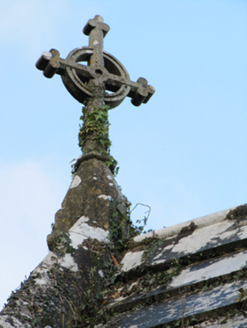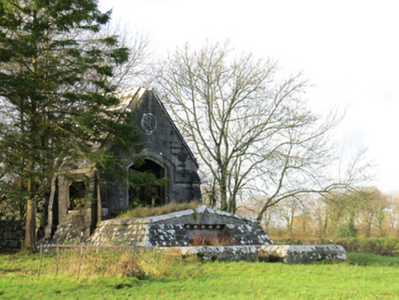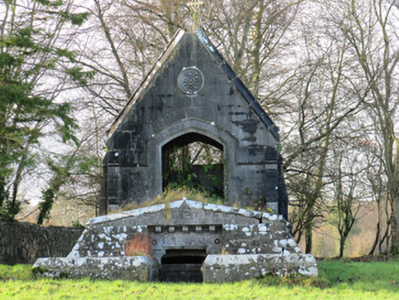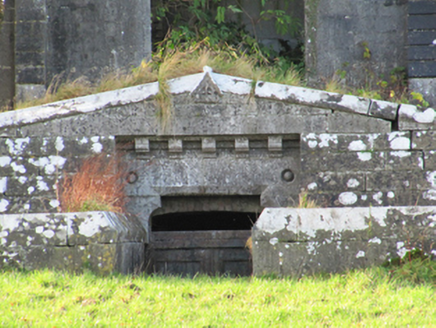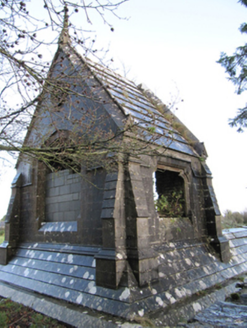Survey Data
Reg No
30410022
Rating
Regional
Categories of Special Interest
Artistic, Historical
Original Use
Mausoleum
In Use As
Mausoleum
Date
1860 - 1880
Coordinates
188134, 220399
Date Recorded
23/11/2009
Date Updated
--/--/--
Description
Freestanding cut and carved limestone mausoleum, erected c.1870, having gabled open-sided upper chamber with stepped buttresses to corners, set on crypt with vaulted roof in form of truncated pyramid. Upper chamber comprising pitched cut-stone vaulted roof with cut-stone copings having carved treoil details to ends, and cross finial. Cut-stone walls with carved medallions to gables, Tudor arch openings with moulded surrounds to gables, that to west partly blocked, and moulded surrounds to shouldered square-headed openings to other elevations, all with cut-stone surrounds. Crypt roof has carved copings, square-headed door opening set in square-headed recess with corbels, and having cast-iron door. Cut-stone steps set in cut-stone apron to east end, descending to door. Mausoleum stands within feature known as 'The Lisheen', next to graveyard, latter having rubble limestone boundary walls with wrought-iron gate set to round-plan piers with domed caps, and having stile to one side.
Appraisal
The family mausoleum of the Seymours, who acquired Ballymore Castle and its lands around 1700 and remained there until the early twentieth century. The cut and carved limestone shows both the skill of nineteenth-century craftsmen and the wealth and status of the Seymour family who commissioned the monument. Situated beside a graveyard in a small enclosure known as the 'Lisheen' which is thought to have been used for burials before the graveyard walls were constructed.
